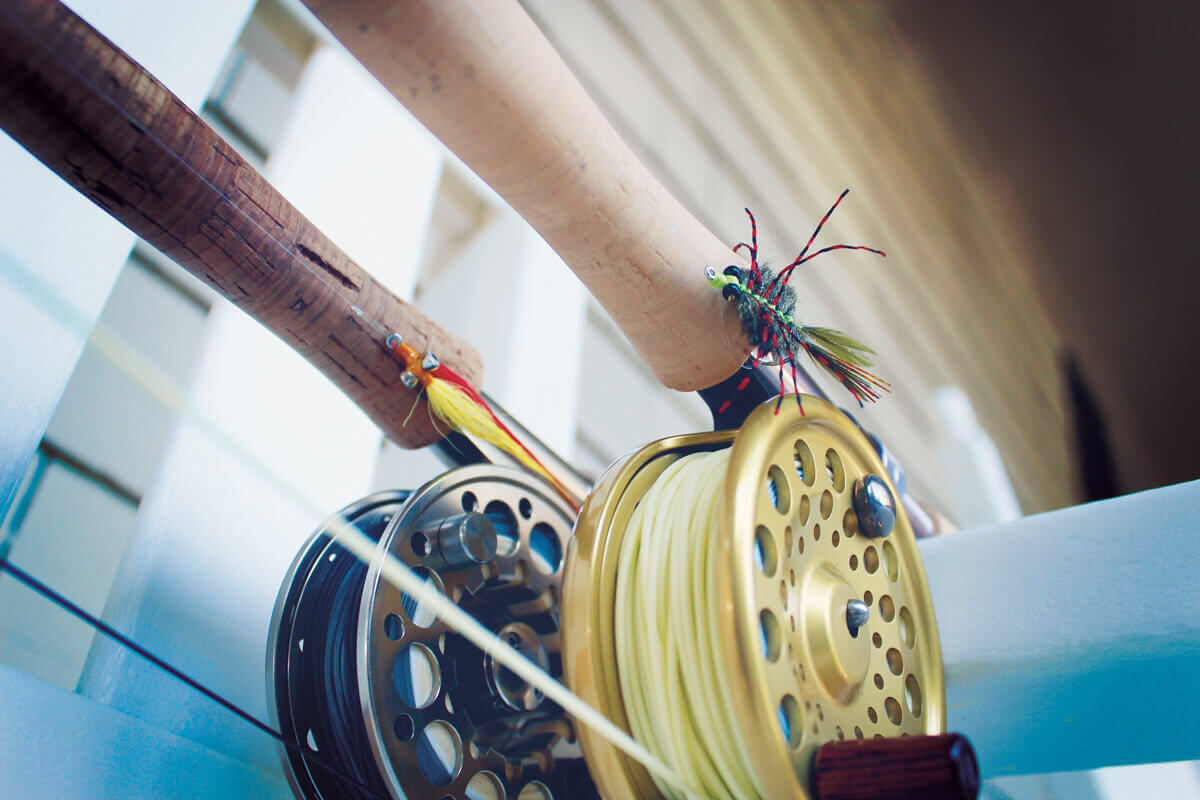I’m in a land of islands—islands of all sizes and import, from mounds of oysters growing on their fallen brethren’s shells to mansion-settled swaths of developed marshland. The tide snakes in and out of this most natural and unnatural of mudscapes, coursing around the shifting shoals and grassy flats as ancient as the continent itself and docks and retaining walls as new as this very year—and I can’t imagine any place I’d rather be than following the fish that come in and out with the water.
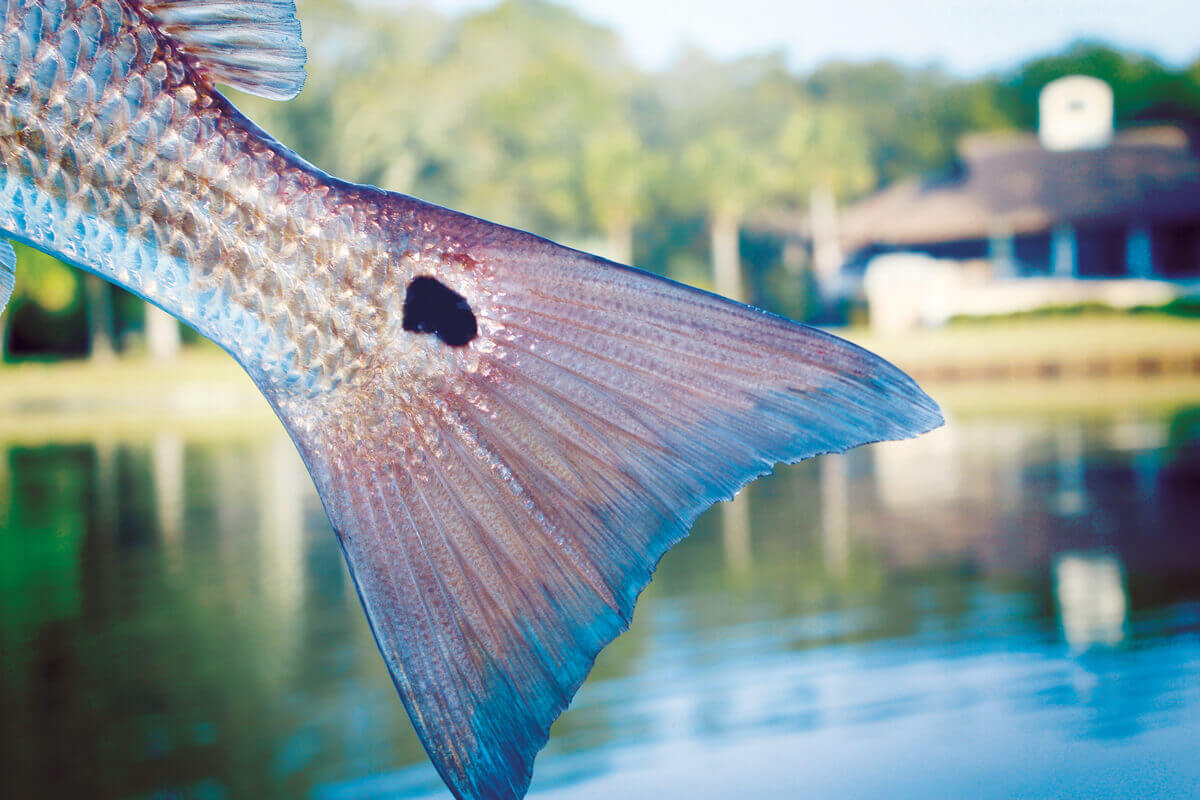 What fish? you may ask—well, I’ll tell you. What say you to flounder the size of doormats? How about bright blue and copper tails of redfish, making the subtlest of disturbances in the flooded swaths of spartina grass? Perhaps one should mention the seatrout: silver, speckled, dog-toothed rockets absorbed with the single and singular task of murdering hapless marsh baitfish in the channels and open pools one happens upon paddling between the islands.
What fish? you may ask—well, I’ll tell you. What say you to flounder the size of doormats? How about bright blue and copper tails of redfish, making the subtlest of disturbances in the flooded swaths of spartina grass? Perhaps one should mention the seatrout: silver, speckled, dog-toothed rockets absorbed with the single and singular task of murdering hapless marsh baitfish in the channels and open pools one happens upon paddling between the islands.
One is surrounded by life in the marshes of Lowcountry South Carolina—a million subtle but obvious lives and past lives. That’s what makes it so compelling. I’m never just fishing here; I’m immersed in the current of cultures going about their business. Perhaps it’s the feeling of enjoying something fully without really mattering to it. Perhaps it’s the indifference of Mother Nature that makes saltwater fishing so enjoyable. Big white cranes staking out their tidal rivulets for mullet, dolphins breaking the surface in the bays, fiddler crabs moving in and out of their burrows in the pluff mud—skating through in my kayak does little, if anything, to interrupt their daily machinations. Then there’s the acute spirit of all that’s come before—new oysters beginning life on the shells of the dead, listing pilings rotting away as the only remaining evidence of a home that couldn’t withstand the proximity to the impartial ocean, a barnacle-covered rope washed up on a bank that used to tether a forgotten crab trap, the nest of a fish hawk that may be revisited and rebuilt next year, or may be passed up in favor of a new tree with a better view of the food supply below.
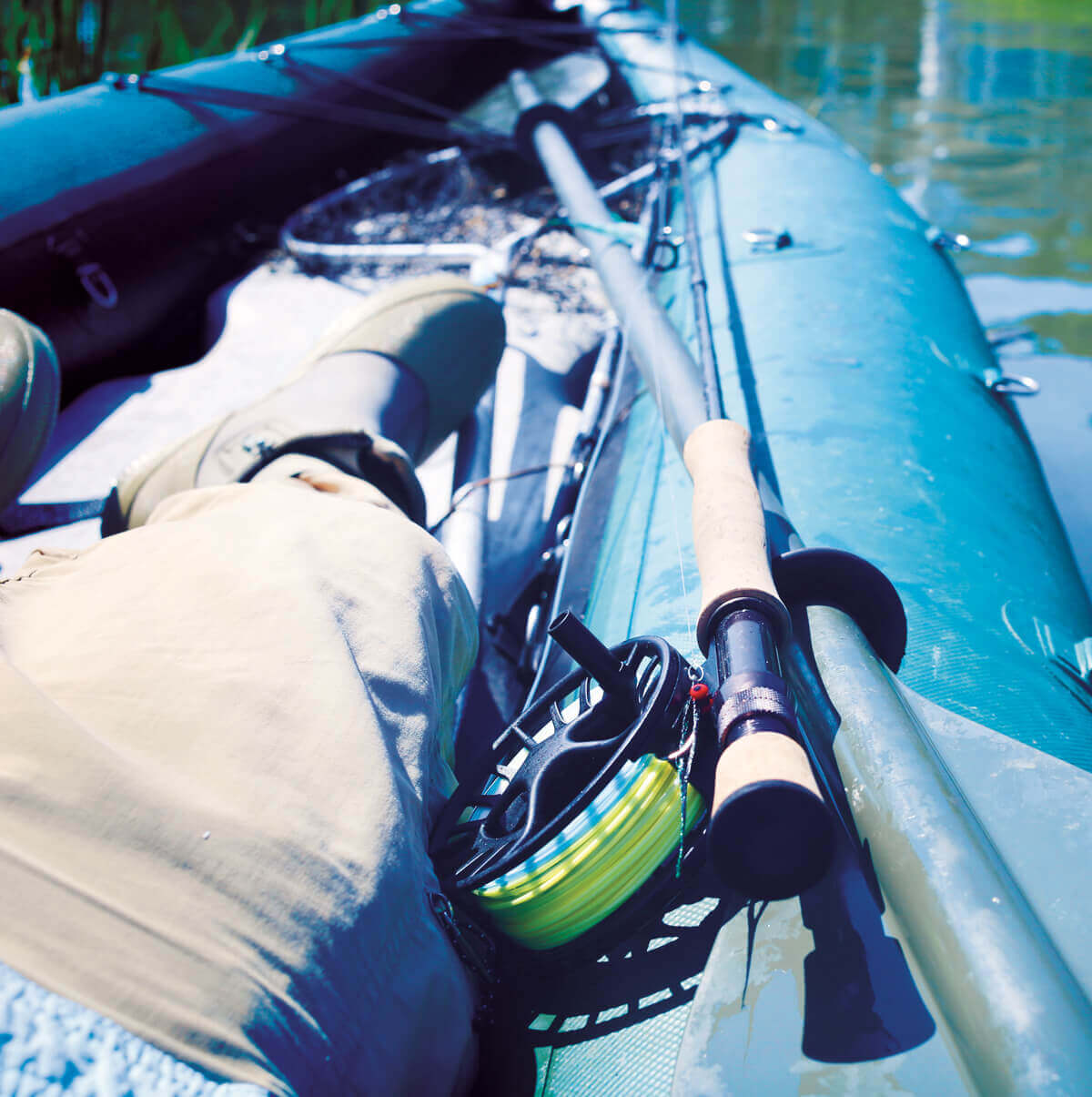 Food of past and present is another inescapable flavor of the Lowcountry. Everywhere I turn, I’m reminded of food in one way or another—not least the complex food web I paddle into while fishing, forcibly pushing my way into the daily life of a redfish by replacing one of its mud-minnow meals with a mud-minnow imposter, like a bakery delivering a Styrofoam display birthday cake instead of the real deal. But marsh food chain aside, the omniscient industry and end-product of food culture can be viewed from water or land, canal or road, skiff or truck. Should I ever drive over the Intercoastal Waterway without seeing shrimp boats at rest below, waiting for the next early morning mission, it would be as if life had ceased in South Carolina. Without charter boats filled with tourists jigging for flounder—though not necessarily my idea of great sport—the tidal byways would seem empty, dead, wrong.
Food of past and present is another inescapable flavor of the Lowcountry. Everywhere I turn, I’m reminded of food in one way or another—not least the complex food web I paddle into while fishing, forcibly pushing my way into the daily life of a redfish by replacing one of its mud-minnow meals with a mud-minnow imposter, like a bakery delivering a Styrofoam display birthday cake instead of the real deal. But marsh food chain aside, the omniscient industry and end-product of food culture can be viewed from water or land, canal or road, skiff or truck. Should I ever drive over the Intercoastal Waterway without seeing shrimp boats at rest below, waiting for the next early morning mission, it would be as if life had ceased in South Carolina. Without charter boats filled with tourists jigging for flounder—though not necessarily my idea of great sport—the tidal byways would seem empty, dead, wrong.
Past and present traditions of eating the region’s food are intertwined with the cultures, the heritage of the Lowcountry; perhaps none is as important as that of the Gullah. Communities of slaves brought to work the rice fields of the sea islands—isolated from much of the mainland, resilient in health and in spirit, and persevering in preserving a deep connection with their African heritage—they developed a unique culinary oeuvre rooted in creole elements, fresh and seasonal seafood, and rice. The proud heritage is preserved to this day; among other places, it’s on display in force at Gullah Grub, a standalone restaurant in an old two-story southern house on St. Helena Island near Beaufort, South Carolina. You don’t go to Gullah Grub for hip gastronomy, self-absorbed alternative takes on southern classics, or a cloth-napkin dining experience; you go to have seafood and barbeque done simply, perfectly, honestly, and traditionally. The barbeque is smoked with wood, the cornbread is baked fresh, and the rice is steamy and rich. The crab soup and gumbo ensure every single ingredient has a distinct voice while retaining the bold chorus of their combination. And, if you’re lucky, you may meet Bill Green, proprietor and chef and compulsively beaming icon of Gullah culinary spirit.
And that’s just one restaurant. Seafood joints line the shores here. That’s not unique to South Carolina, of course, but the seafood immersion here seems more complete than in other places. I can fish my way through the marsh to the open channel, paddle behind the shrimp boats, and pull up to a dockside crab shack. U-catch to wholesale to retail and back again, all in a single tide cycle–pretty darn good!
The specialties at seafood shacks or restaurants in the Lowcountry are numerous–as regional food goes, the Lowcountry isn’t a one-trick pony. The she-crab soup soothes with smoothness, richness, and sweetness; the hushpuppies are crisp on the outside, gooey on the inside, and heavy on the onion; and the Lowcountry boil–shrimp, potatoes, corn, and sausage steamed in Old Bay and dumped out on newspaper–must be eaten with one’s hands. If the food coma doesn’t get you, you can fish around the tide cycle in the Lowcountry—never is there a dull moment in the marsh. Work flooding grass for feeding redfish winding their way onto the flats with the incoming tide; move to seatrout in flooded bays; swing creek outflows for flounder on the outgoing; or fish wide, expansive flats for laid-up schools at low tide. And that’s just the fishing; I’ve not even mentioned throwing crab traps, jigging for seabass, or collecting your own bucket of oysters.
And there are hazards, to be sure. Most are related to oyster shells or the thick, sucking mud–sometimes both. There was the time my most gung-ho of fishing companions, R., pitching soft plastics into a tidal creek, stepped in mud up to his knee, and after a protracted struggle to extricate himself, came up less one sandal. Between him and more solid land sat menacingly stood oyster bar, which he attacked with one shod foot only. Needless to say, he left blood tracks on the floor of the rental house that night. There was a lot of blood. (And the poor guy was already a tad low on blood as it was, having just gotten a large tattoo of a redfish tail on his chest a few hours earlier, which he commemorated by hooking and landing a 40-pound beast in a golf course pond.) On another occasion, I left my buddy C.—I’m beginning to think he actually seeks out fishing misery—for all of 15 minutes to return to find him poling his kayak through mud and oyster shells from which most of the water had already departed, taking on the consistency of rapidly congealing soup.
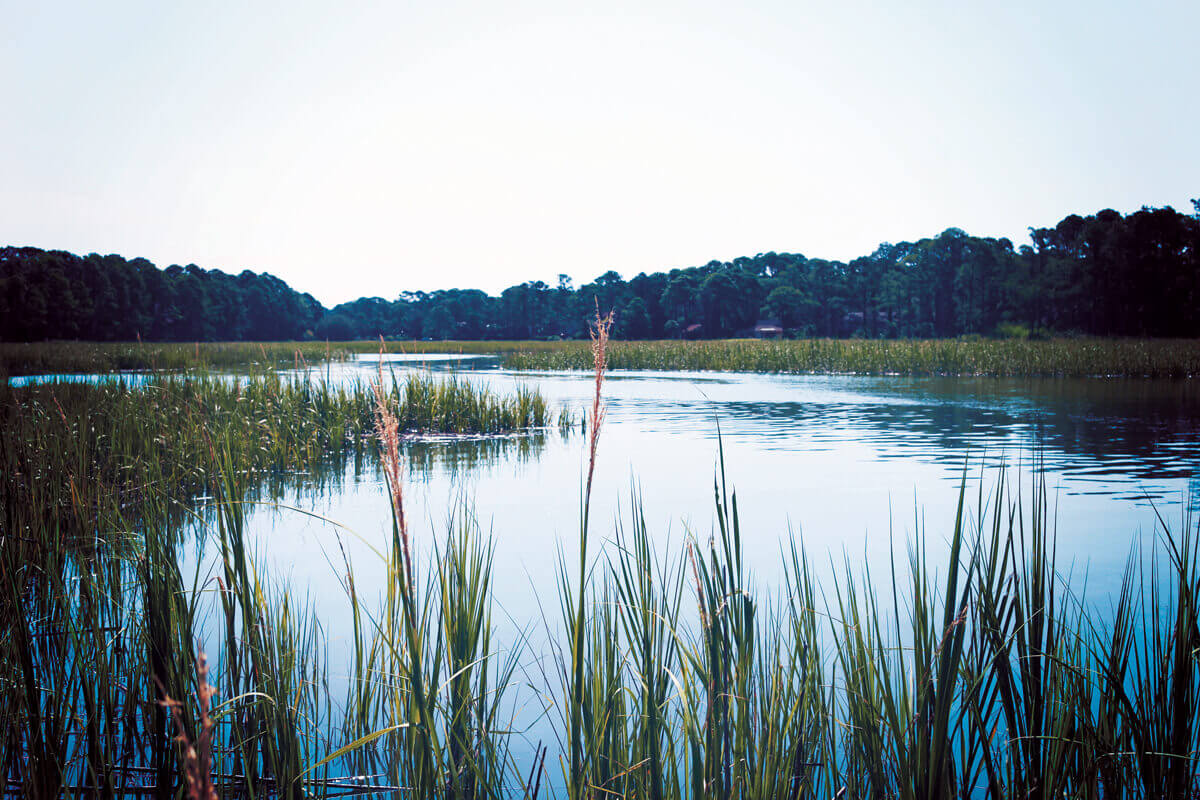
Tribulations and triumphs of a day spent in the Lowcountry marshes create an appetite that can only be satisfied by the food of the area. It’s that cycle of life that refreshes and delights. The rewards for a day of fishing are not only the sights and sounds of the marsh, but also the spirit of cultures that have come before and persevere still; it’s not simply the bent rods and the eagles nesting on little grassy islands, but also the oysters I’ve collected myself, grilled in the half shell with a bit of butter.
James P. Spica Jr. is a regular contributor to Tail Fly Fishing Magazine
SUBSCRIBE TO TAIL FLY FISHING MAGAZINE
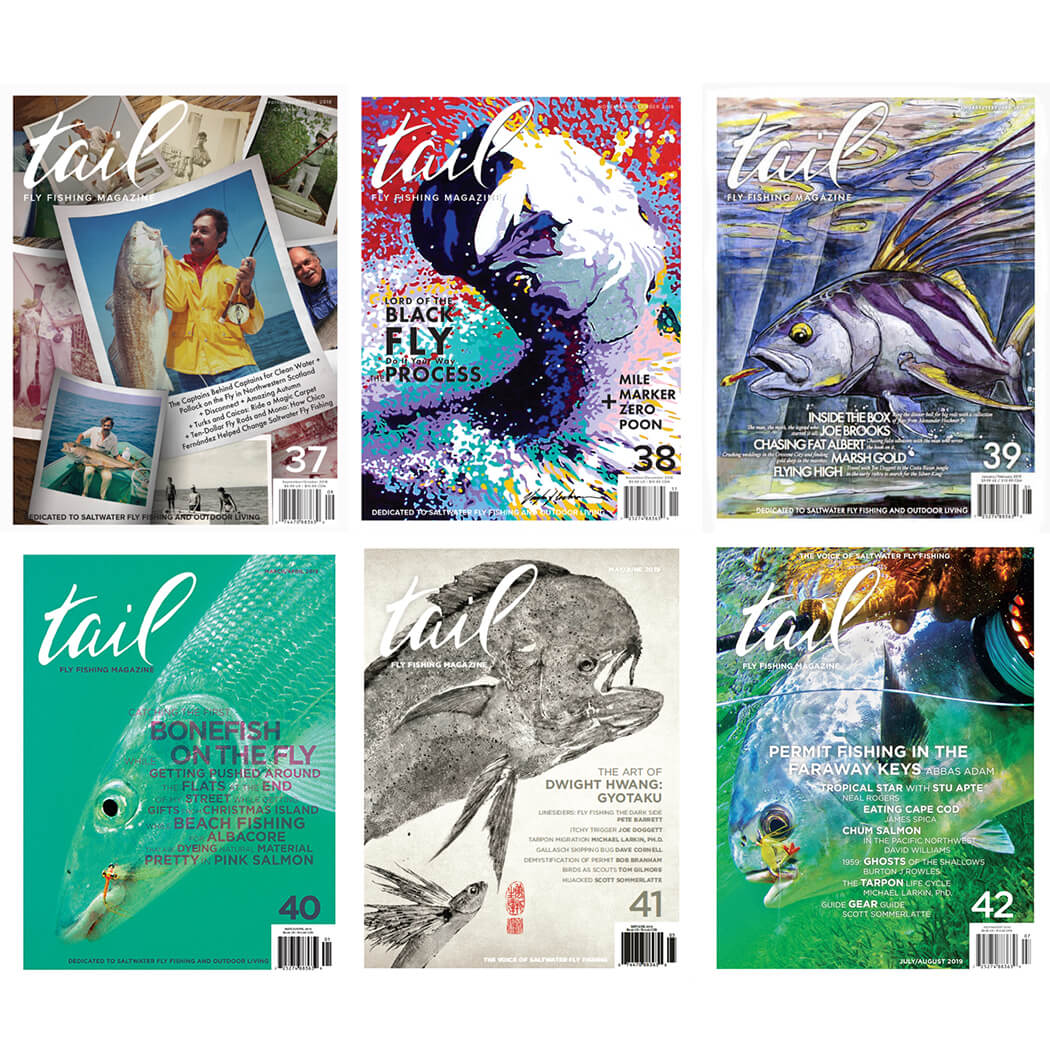
Related Articles:
Marsh Gold – Louisiana Redfish
Salt Marsh Secrets
DIY Bonefish On Mangrove Cay

